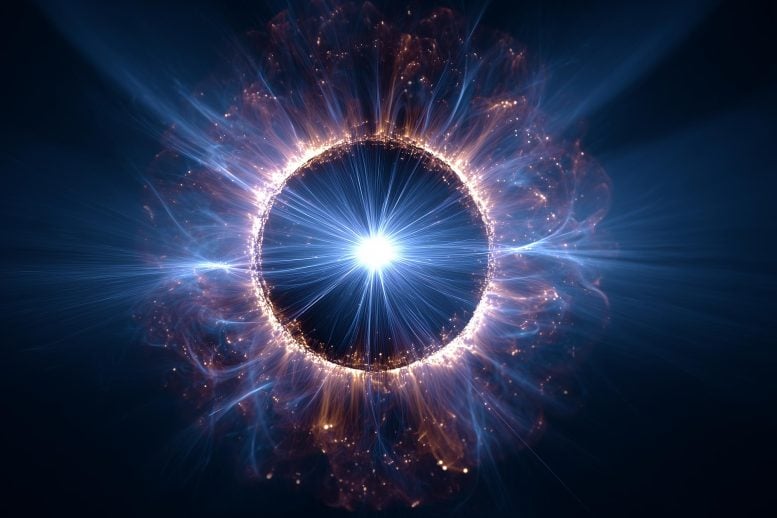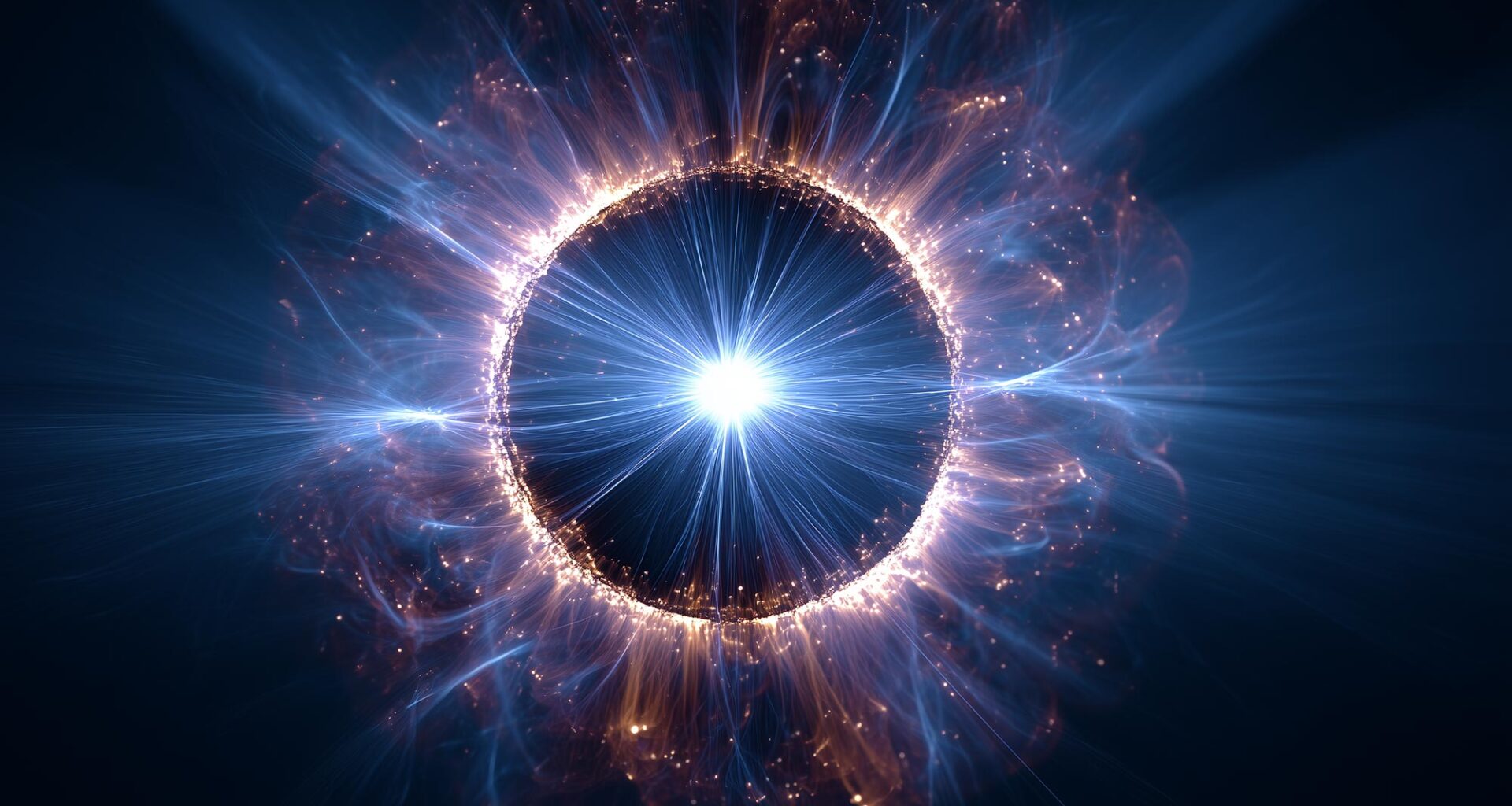 Mysterious “dark dwarfs” may glow eternally by burning invisible dark matter — and spotting them could finally crack one of the universe’s greatest mysteries. (Artist’s concept.) Credit: SciTechDaily.com
Mysterious “dark dwarfs” may glow eternally by burning invisible dark matter — and spotting them could finally crack one of the universe’s greatest mysteries. (Artist’s concept.) Credit: SciTechDaily.com
Astronomers may have discovered a whole new type of star — mysterious “dark dwarfs” that could glow forever by feeding on dark matter, the invisible substance thought to make up most of the universe.
Unlike ordinary stars that burn nuclear fuel, these strange objects might be powered by annihilating dark matter particles, creating an eternal source of light.
A Mysterious New Kind of Star
Scientists may have identified a completely new kind of cosmic object that could provide vital clues about one of the universe’s deepest mysteries: dark matter.
Astrophysicists have proposed the existence of unusual star-like objects called “dark dwarfs,” which might be faintly glowing near the center of the Milky Way.
Despite their name, these objects are not dark in appearance. Instead, they are thought to be powered by dark matter (the invisible substance believed to make up roughly a quarter of the universe).
The proposal comes from a collaborative team of researchers from the UK and the US, with their findings published in the Journal of Cosmology and Astroparticle Physics (JCAP).
Born From Brown Dwarfs
Using theoretical models, the scientists suggest that dark matter could become trapped inside young stars, generating enough energy to prevent them from cooling down. This process could transform them into long-lived, stable objects known as dark dwarfs.
These exotic stars are thought to form from brown dwarfs, often described as “failed stars” because they lack the mass needed to sustain the nuclear fusion that powers most stars. Normally, brown dwarfs gradually cool and fade over time.
However, if a brown dwarf happens to exist within a dense region of dark matter, such as near the Milky Way’s center, it could capture dark matter particles. When those particles collide and annihilate one another, they release bursts of energy that keep the dark dwarf glowing — potentially forever.
The Role of WIMPs
The existence of these objects depends on dark matter being made of specific kinds of particles, known as WIMPs (Weakly Interacting Massive Particles).
These are heavy particles that barely interact with ordinary matter, but could annihilate with one another inside stars, providing the energy needed to keep a dark dwarf alive.
To tell dark dwarfs apart from other faint objects like brown dwarfs, the scientists point to a unique clue: lithium.
The researchers believe dark dwarfs would still contain a rare form of lithium called lithium-7.
In normal stars, lithium-7 gets burned up quickly. So, if they find an object that looks like a brown dwarf but still has lithium-7 that’s a strong hint it’s something different.
A Window Into Dark Matter
Study co-author Dr. Djuna Croon of Durham University said, “The discovery of dark dwarfs in the galactic centre would give us a unique insight into the particle nature of dark matter.”
The team believes that telescopes like the James Webb Space Telescope could already be capable of spotting dark dwarfs, especially when focusing on the centre of the galaxy.
Another approach might be to look at many similar objects and statistically determine whether some of them could be dark dwarfs.
Finding just one of these dark dwarfs, the researchers say, would be a major step towards uncovering the true nature of dark matter.
Reference: “Dark dwarfs: dark matter-powered sub-stellar objects awaiting discovery at the galactic center” by Djuna Croon, Jeremy Sakstein, Juri Smirnov and Jack Streeter, 7 July 2025, Journal of Cosmology and Astroparticle Physics.
DOI: 10.1088/1475-7516/2025/07/019
Never miss a breakthrough: Join the SciTechDaily newsletter.
